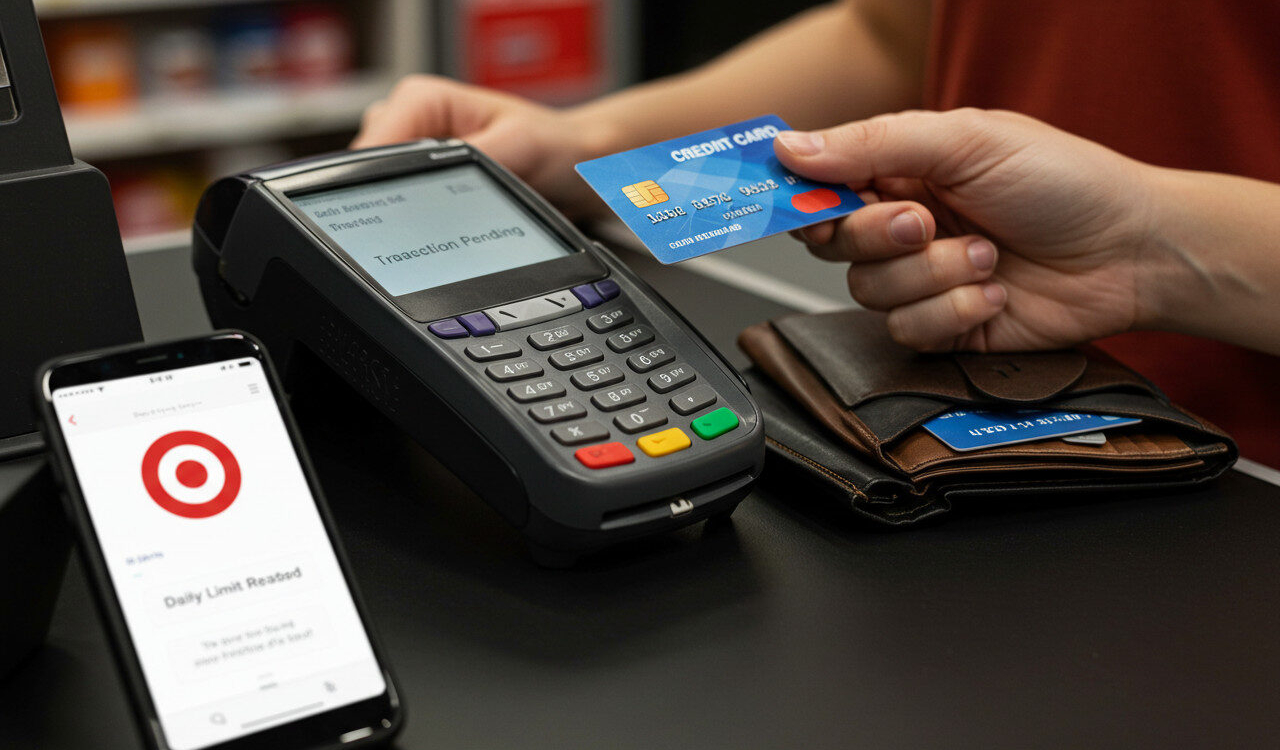Introduction
Debit cards let users withdraw money directly from their bank accounts to make purchases or access cash at ATMs. However, banks set daily spending and withdrawal limits to maintain security. Understanding these limits helps individuals manage their money effectively and avoid declined transactions or overdraft fees.
Daily Debit Card Limits
What Are Daily Purchase and Withdrawal Limits?
Banks and credit unions set daily limits for spending and ATM withdrawals to safeguard checking accounts. For example:
- Most standard debit cards allow daily spending up to $2,000
- ATM withdrawals are often capped at $500
- Premium or business debit cards may offer higher spending limits, up to $5,000
Withdrawal limits include ATM fees, which can impact the amount of cash users receive. These limits vary by card type, account balance, and institution.
Why Do Banks Set Daily Debit Card Limits?
Daily limits protect account holders by minimizing the risk of fraud. If unauthorized activity occurs, daily caps help reduce potential losses. Limits also support fraud detection systems and discourage overspending.
Types of Debit Card Limits in the United States
Different card types offer varying limits for:
- ATM withdrawals
- In-store purchases
- Online transactions
Business and premium debit cards often allow higher transaction thresholds compared to standard cards.
ATM Withdrawal Limits
ATM limits restrict the amount of cash accessible per day. Most standard debit cards permit up to $500 in withdrawals. These limits account for ATM operator fees, which can reach up to $15.
ATM Withdrawal Limit Table
| Card Type | Daily ATM Withdrawal Limit | ATM Operator Fees |
|---|---|---|
| Classic Debit Card | $500 | Up to $15 |
| Platinum Debit Card | $500 | Up to $15 |
| Business Debit Card | $500 | Up to $15 |
| HSA Debit Card | $500 | Up to $15 |
These values may change based on account status, ATM provider, or customer-requested adjustments.
Point-of-Sale (POS) Purchase Limits
POS limits define how much can be spent in stores daily. Banks use these caps to limit fraudulent purchases. Users can typically view or adjust these limits through their mobile banking apps to avoid overdraft fees or declined payments.
Online and Mobile Payment Limits
Digital apps such as Google Pay and Apple Pay have spending limits connected to the user’s bank. These limits differ based on
- Debit card type
- App provider
- Bank-specific rules
Monitoring these limits can prevent unauthorized payments and improve budgeting control.
Factors That Affect Your Debit Card Limits
Limits are based on
- Account history
- Financial institution
- Type of debit card
- Account balance
Long-term account holders with good records may receive higher limits, while new or inactive accounts often start with lower ones.
Security and Fraud Prevention Measures
Daily limits act as a defense against fraud. Additional safety tools include:
- Overdraft protection
- EMV chip technology
- Real-time transaction alerts
Regularly reviewing transaction history enhances fraud detection and keeps financial activity secure.
Guide to Managing Your Daily Debit Card Limits
What You’ll Need to Get Started
- A debit card linked to a checking or savings account
- A secure PIN
- A mobile banking app for transaction management
- Up-to-date contact details with your bank
Bank’s Limit Policies
Banks may change limits occasionally. Staying updated through bank notifications or by contacting customer service ensures proper management of your card usage.
How to Check and Adjust Your Daily Debit Card Limits
Log In to Your Online Banking or Mobile App
View balances and past transactions for real-time account tracking.
Locate Your Debit Card Settings or Account Services
Find limit settings within the app or online dashboard.
Review Your Current Limits
Verify your limits align with your financial needs and spending patterns.
Request a Limit Increase or Decrease
Submit a request through your app or contact support for short-term adjustments.
Confirm Changes and Check for Bank Approval
Ensure the bank approves and applies your requested limit changes.
Tips for Staying Within Your Daily Debit Card Limits
- Use mobile alerts to track daily spending
- Regularly monitor balances and transactions
- Avoid large purchases late in the day to prevent declines
- Plan ATM withdrawals around known limits
Frequently Asked Questions
Can I make my daily debit card limit go up for a short time?
Yes. Most banks allow temporary increases through mobile apps, online banking, or customer service.
What happens if I go over my daily debit card limit?
Transactions may be declined. In some cases, overdraft protection may apply, which could incur fees.
Are all banks in the U.S. using the same daily debit card limits?
No. Limits vary by bank and account type. Account history also plays a role.
How can I find out my specific daily debit card limits?
Check your bank’s mobile app or website, or contact customer support for exact figures and policies.
Top Takeaways
- Most debit cards have daily spending caps of $2,000 and ATM withdrawal limits around $500
- Business and premium cards offer higher limits
- Digital apps and mobile banking tools help manage and adjust limits
- Fraud prevention systems depend on spending caps and transaction alerts
- Users can request limit changes through their bank if needed
Final Thoughts
Understanding daily debit card limits helps prevent overspending, supports fraud prevention, and ensures smoother transactions. With tools like mobile apps and real-time alerts, managing these limits is simpler and more secure.
Written by Kent Baker Updated by Albert Fang
Source Citation References:
+ Inspo
There are no additional citations or references to note for this article at this time.
